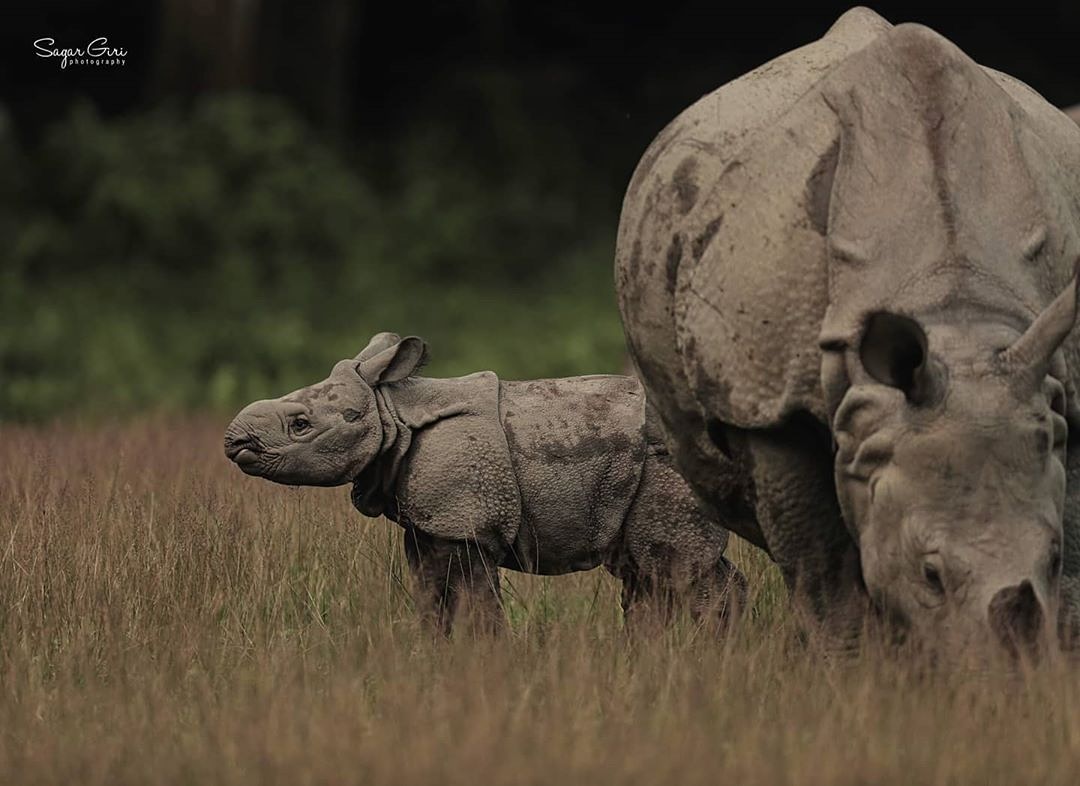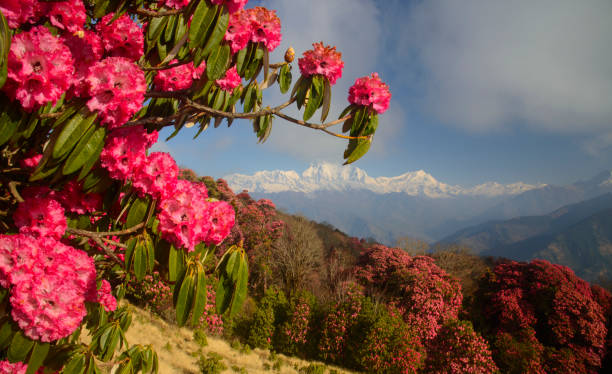
 A one-horned rhino spotted after leaving water in Chitwan National Park, Nepal.
A one-horned rhino spotted after leaving water in Chitwan National Park, Nepal.© Sumanth Kuduvalli / Felis Creations / WWF[/caption] Climate change and rhinos There are indications that climate change has had a negative impact on rhinos and rhino habitats. This can affect the life cycle of the rhinoceros and can lead to a decline in habitat quality. For example: loss of water sources, declining grassland, spread of invasive species, spread of unnecessary trees etc. According to rhino expert Santaraj Gyawali, especially the rhino habitat is the riparian area and the adjoining grasslands and swamps. The natural management of the grassland is going on according to the flow of the river in that area. However, climate change directly affects the rivers flowing from the mountains, ultimately affecting the rivers flowing into the Terai, adversely affecting rhino habitat. At the same time, the example of the rhinoceros being swept away by the big flash flood is fresh among us. There is an urgent need to prepare in advance for a sustainable exit during these droughts. Rhino horn trade and deeply rooted superstition Illegal wildlife trafficking involves complex, multibillion-dollar, multi-tiered levels. Rhino horn is illegally traded and consumed. Studies have shown that the price of horn is higher than that of gold, silver, diamonds and drugs, which is a major challenge for the conservation of this species. Its consumption is used as cultural, social, traditional medicine. Although CITES has banned all these trades, illegal poaching and trading have been going on. Studies have shown that the growth of such trade is due to the extensive economic progress in the Asian region. With the economic progress of China and Vietnam in particular, the region is considered to have established itself as a major market for horn trade. Surprisingly, the Chinese and Vietnamese have a superstitious belief that they are looking for wild rhino horn in private Chinese medicine, especially in private countries (especially in African countries where it is legally practiced) and are willing to pay for it. Such deep-rooted superstitions have called into question the future of the rhino species. Need of Effective Management Since rhinos are herbivores that eat green grass, grassland management is essential. With limited grasslands, rhinos roam the buffer zone in search of grass, creating a human-rhinoceros conflict. There are many challenges in grassland management. Such as having limited resources, having too much area to manage, lack of scientific knowledge flow to the lower level, administrative slowness etc. Therefore, it is necessary to manage the grassland based on cyclical blocks including solving the above challenges. As a result, grasslands can be managed in a planned and simple manner, uncontrolled forest fires can be reduced and patrolling can be more effective. The park community grassland partnership can also be promoted. It is necessary to manage the grassland in partnership with the Buffer Zone Committee, Community Forest Group, Community Based Poaching Control Group, and Cooperatives present in the Buffer Zone. It is important to pay special attention to the timing of grassland management. There is a proper time for grassland management and if it is not at the same time, it makes no sense. Similarly, the use of modern technology in grassland management (as if it came late or hard) has recently taken place. Of course, this may have some negative effects, but it is not possible to cut thousands of hectares of grassland in the park by hand. Therefore, it seems essential to use technology for grassland management on a large scale. As rhinos are a riverine species, it is important to pay attention to the quality of the water flowing in the river and how it affects the rhinos. Similarly, water solution and springs need to be cleaned and properly managed from time to time. Rhinoceros is a water loving species so it is essential to manage the overgrown solutions in time, remove the overgrown weeds like water hyacinths, build new solutions where necessary and monitor these solutions regularly. Poaching is another major problem. Poverty and illiteracy are factors to increase the rate. The effects of the current Covid-19 epidemic could be far greater than previously thought and predicted. Therefore, there is an urgent need to increase modern and strict security arrangements and, in a sustainable manner, to prioritize social, economic and educational development in the park and its Buffer zone areas. Finally, poaching of rhinos and the trade of their organs, habitat destruction, fragmentation and degradation are major challenges to rhino conservation. To address this, there needs to be high and effective coordination and cooperation between the federal, state and local governments and all the bodies and partnerships under these governments. Their role in effectively implementing international and regional (especially with China and India) protection treaties and agreements. In doing so, the Ministry of Forests and Environment and the Department of National Parks and Wildlife Conservation will achieve the national goal of increasing the number of rhinos to 650 by 2022, 700 by 2025 and 783 by 2030 in line with the Sustainable Development Goals of Nepal. Translated from the online version of Setopati published on 5th October 2020, written by Avinaya Pathak









Facebook Comments